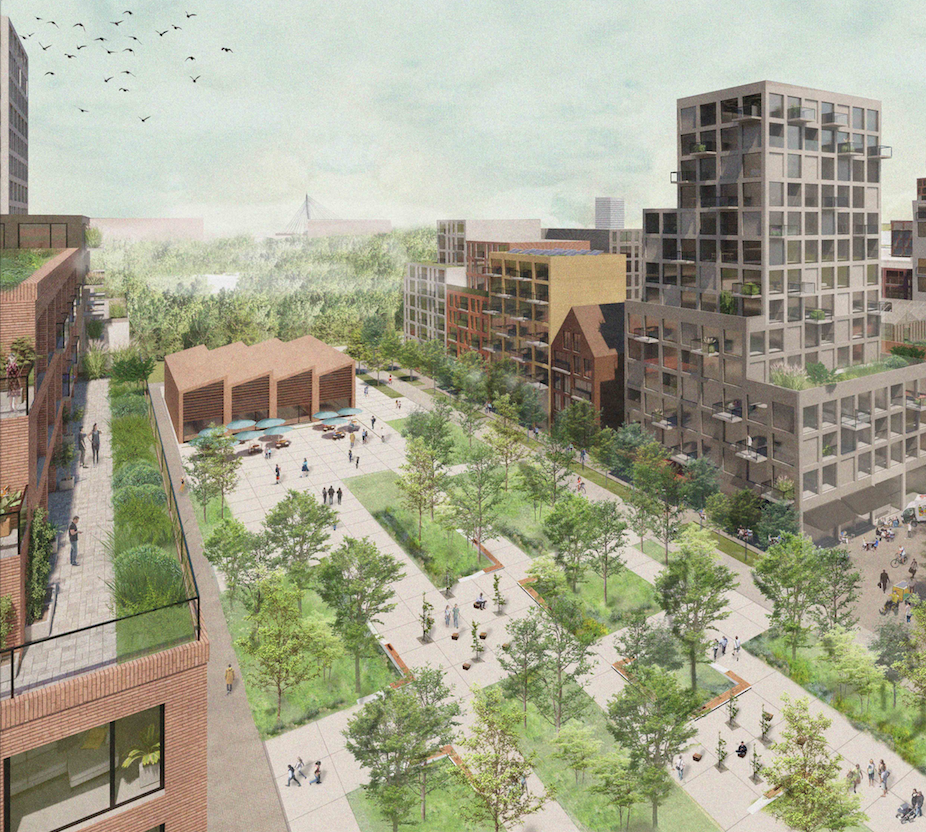Instead of the vrooming of car engines, two towns in Europe listen instead to the gentle whirr of cyclists and the sound of people chattering. Vauban, a town in southern Germany banned cars twenty years ago and Merwede, a district in the Netherlands is currently following suit. Even on our own shores here in the US, we’re seeing a shift in the prioritization of cars. But, does banning four wheels really improve quality of life?
When Vauban banned cars a little over 20 years ago they were never fanatical about it. They instead, designed the district in such a way that residents were incentivized to ditch their cars. Iwona Alfred, explains “It’s not about limiting people, but it’s really [about] making it easier to decide not to own a car because the infrastructure is there.” Vauban was converted from a disused military base to a sustainable district by combined efforts from the local government and builders. Most residents travel by bike or use the tram that has frequent access to the main center of Freiburg, instead of driving. Vauban residents can get tram discounts and transit stops are a maximum of 400 meters apart.
This isn’t just a foreign concept, we’re starting to see traces of carless societies here in the US, with the first no-car complex, called Culdesac Tempe, being built in Tempe, Arizona. Culdesac Tempe is designed to make car-free living seamless for it’s 1000 future residents. The $140 million development has transport at the front of it’s mind, for starters, the complex is strategically placed across the road from Smith-Martin light-rail stop and it also includes scooters, bicycles and some ridesharing cars available for its residents. The idea is that “you can find fresh produce, locally roasted coffee, and a quick bite to eat within a 5-minute walk of your apartment.”
Luc Nadal, an urban developer, acknowledges it is hard for other places to ditch cars. He explains this is due to existing infrastructure and laws which require mandatory parking within cities, a “legacy from the mid-20th century when the vision of modernity was one of personal motor vehicles”. Although challenging, he lists a whole host of reasons why going car-free and moving towards public transit is beneficial. It creates less pollution, is healthier and it’s not as exclusive because anyone can catch a train or ride a bike, whether they hold a license or not. Finally, when you remove cars, what is left is more social spaces for mingling and a less stressed society. Culdesac Tempe wants to support a strong community, with communal BBQ grills, pool, parks, guest suits, co-working space and a Makerspace, to name a few of the communal features.

Meanwhile in Merwede, a neighborhood of Utrecht in the Netherlands, is another society following Vauban’s suit but on a larger scale. The district was originally built as a business district but it is going to be transformed over the next couple of years, with completion on the first homes expected by 2022. The neighborhood will have 6000 homes, two new primary schools, a high school, medical centers, sports arenas and a myriad of shops, all of which will be easily accessible by foot or bike. Marco Broekman, the project’s architect, told The Guardian “it should be easier to get a bike than it should be to get a car”
Broekman stresses to mynews “by having this car-free area, we can design spaces without the straitjacket rules of the car” which means instead of clogging up city centers with parking and roads they can focus on designing better public spaces, boosting biodiversity and encouraging social interaction.
The societal shift doesn’t have to be as dramatic as removing cars all together, Metropolitan Area Planning Council in Boston has conducted its own research, identifying that 30 percent of parking spaces in apartment complex’s go unused, even in the early hours of the morning, when most residents are assumed to be home. It’s this research that is influencing the way developers and planners assess the demand of parking and can incorporate that into creating more community space along with reduced housing costs, the encouragement for more sustainable transportation options and help alleviate congestion and reduce greenhouse gas emissions.
Culdesac Tempe, Vauban and Merwede did not happen by chance, they are a by-product of intentional policy and forward-thinking transit frameworks. When you remove the cars, what is left is the liberation of people to move freely and more efficiently within their own cities.




Great article